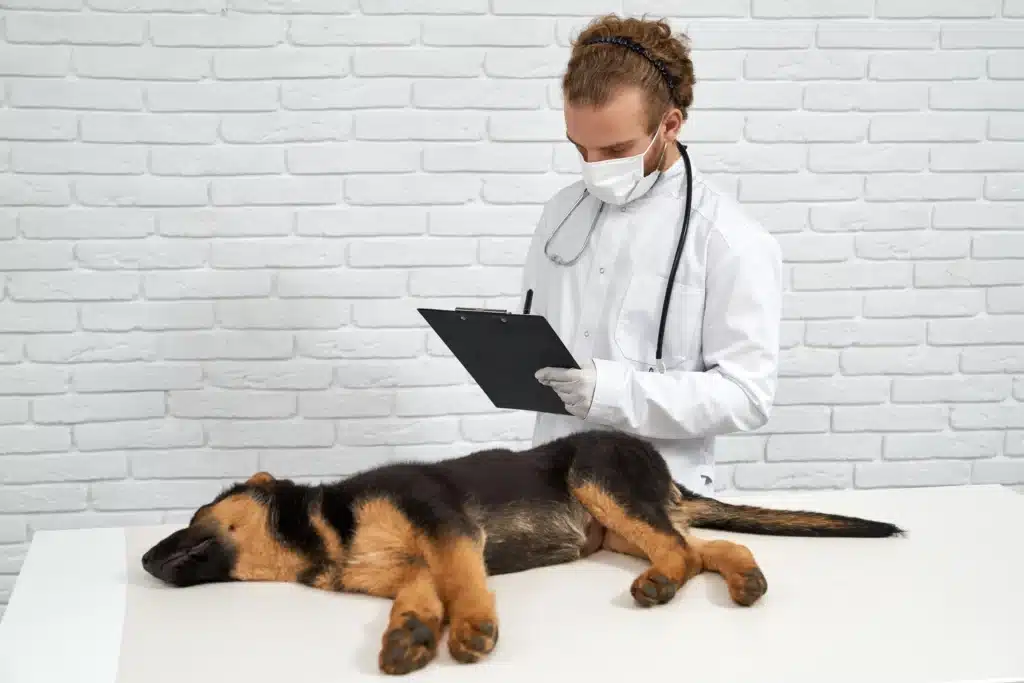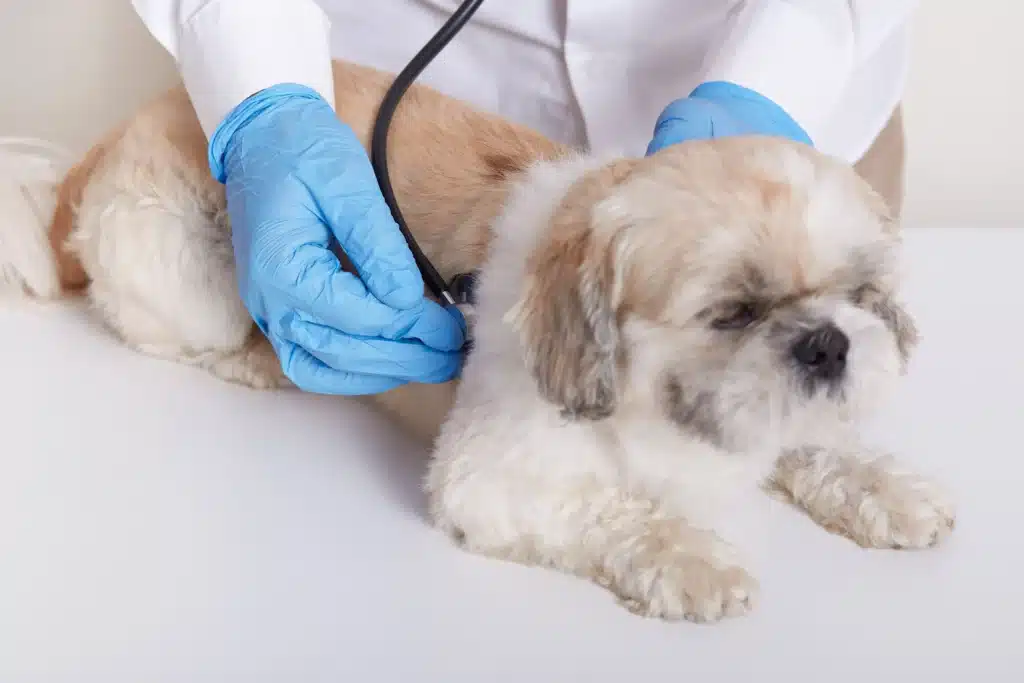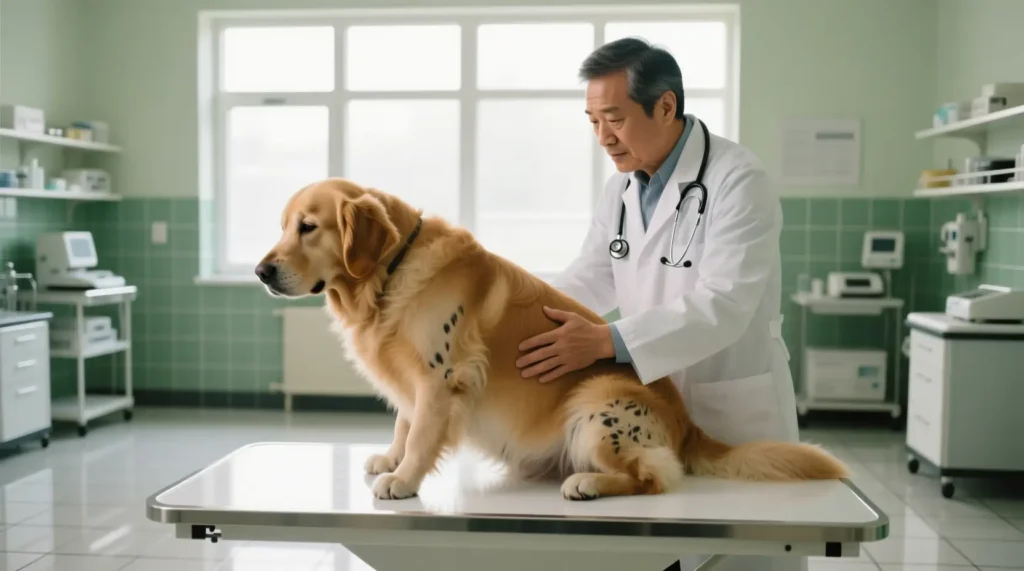Across mixed cohorts, typical survival after a Cushing’s disease diagnosis ranges ~1.5–3 years, but varies widely by cause, age, comorbidities, and how consistently treatment and monitoring are performed. In pituitary-dependent HAC (PDH) treated with trilostane, median survival ~998 days (~2.7 years) has been reported; outcomes are shorter for malignant adrenal tumors and for dogs left untreated.
What determines a dog’s life expectancy with Cushing’s?
Prognosis depends on disease type (PDH vs adrenal), treatment chosen (medical vs surgical), age/body condition/comorbidities, and monitoring quality.
- PDH (~80–85% of cases): Modern series of PDH dogs treated with twice-daily low-dose trilostane reported median survival 998 days (range 26–1,832). Poorer survival was linked to older age, calcinosis cutis, low body condition score (≤3/9), and higher platelet counts.
- Adrenal-dependent HAC (ADH): Adrenalectomy for benign tumors can yield multi-year survival; malignant adrenal carcinomas have markedly shorter medians (often ~6–18 months).
- Comorbid disease (e.g., diabetes): Coexisting diabetes shortens survival vs diabetics without HAC, underscoring the need for tighter monitoring.
Life expectancy in early-stage Cushing’s (including dogs with skin lesions)
When Cushing’s disease is identified early—often by PU/PD, pot-belly, and skin/coat changes (thinning, alopecia, recurrent infections)—and promptly treated/monitored, many dogs live 3–5 years, especially in PDH cohorts responding well to trilostane. Early control reduces downstream risks (hypertension, infections, gallbladder disease, diabetes) that shorten survival.
Clinical note: “Skin lesions” in early HAC frequently reflect hair-cycle arrest or secondary infections rather than end-stage disease; improving cortisol control and addressing infections materially supports longevity.
Cushing’s disease life expectancy with treatment
With appropriate therapy and follow-up, median survival ~2–4 years is common across treated cohorts; PDH on trilostane often clusters ~2.5–3 years with substantial individual range.
- Trilostane vs untreated PDH: In a comparative study, the trilostane group outlived untreated dogs, for whom median survival was ~506 days; trilostane’s median was not reached during follow-up (significantly longer).
- Large HAC cohorts: Population analyses show overall medians often around ~510 days in mixed management populations (reflecting many older, comorbid dogs and variable therapy persistence); proactive treatment and monitoring shift outcomes higher.
Why treatment extends life: Lowering cortisol mitigates hypertension, UTIs/skin infections, muscle catabolism, insulin resistance, and hypercoagulability, cutting the risk of complications that precipitate decline.

What happens if Cushing’s disease in dogs is left untreated?
Without therapy, many dogs decline within ~6–12 months, though some cohorts report medians near ~500 days—still substantially shorter than actively treated PDH. Progressive hypercortisolism leads to recurrent infections, thromboembolism, systemic hypertension, muscle wasting, and organ dysfunction.
Life expectancy in end-stage Cushing’s disease
Once refractory complications dominate (e.g., non-healing infections, repeated thromboembolic events, uncontrolled hypertension/diabetes, or neurologic decline from pituitary macroadenoma), prognosis is typically weeks to a few months, and care pivots to palliation and quality of life (QoL).
End-stage red flags (seek urgent re-evaluation):
- Persistent lethargy/weakness, collapse, or anorexia
- Recurrent UTIs/pyoderma or poor wound healing
- Seizures/circling/mentation change (pituitary mass effect)
- Signs suggestive of thromboembolism (acute limb swelling, respiratory distress)
- Rapid weight and muscle loss despite therapy.
How can owners extend life expectancy after diagnosis?
Combine evidence-based therapy with strict monitoring and risk-reduction:
- Use first-line treatment: trilostane or mitotane for PDH; adrenalectomy for resectable benign ADH; consider radiation for macroadenomas with mass effect.
- Monitor routinely: ACTH stimulation (or LDDST where appropriate), blood pressure, electrolytes, liver enzymes, urine culture, and glucose/diabetes screens.
- Manage comorbidities: early UTI/skin infection treatment; diabetic control; antithrombotic strategies when indicated.
- Optimize nutrition/body condition: controlled calories, adequate protein, and weight management to preserve muscle, improving function and resilience. (General HAC care guidance.)
What does quality of life look like—and when to pivot goals?
When pain, weakness, inappetence, incontinence with dermatitis, or neurologic dysfunction persist despite optimized therapy, quality of life(QoL) often falls below acceptable thresholds and palliative care or euthanasia discussions become appropriate. Validated tools include the HHHHHMM Scale (Hurt, Hunger, Hydration, Hygiene, Happiness, Mobility, More good days than bad) recommended in veterinary end-of-life resources (AAHA, university programs).
Snapshot: survival by presentation and management
| Presentation / Etiology | Typical Management | Survival Outlook (median / typical) |
| PDH (pituitary-dependent) | Trilostane medical management | ~998 days (~2.7 years); wide range by age/BCS/complications |
| ADH (benign adrenal tumor) | Adrenalectomy | Multi-year survival common if resected and disease localized |
| ADH (malignant) | Surgery ± palliative care | ~6–18 months typical |
| Mixed HAC cohorts | Mixed/variable | ~510 days (reflects heterogeneity and incomplete/ceased therapy) |
| Untreated PDH | None | ~506 days median; declines from complications |
| End-stage (refractory) | Palliative only | Weeks–months; QoL-driven |
FAQs About Cushing’s Disease in Dogs
Q1 : Life expectancy in early-stage Cushing’s disease in dogs (with skin lesions)?
Early, treated PDH often achieves 3–5 years, especially if skin/coat issues and infections are controlled and monitoring is consistent.
Q2 : Cushing’s disease in dogs—life expectancy with treatment?
Commonly 2–4 years, with ~2.7 years median reported for PDH on trilostane; adrenalectomy can be longer for benign ADH.
Q3 : Life expectancy without treatment?
Often 6–12 months (PDH cohorts median ~506 days), due to progressive complications of hypercortisolism.
Q4 : End-stage Cushing’s disease in dogs—life expectancy?
Usually weeks to a few months, and care is QoL-focused using tools like the HHHHHMM scale


